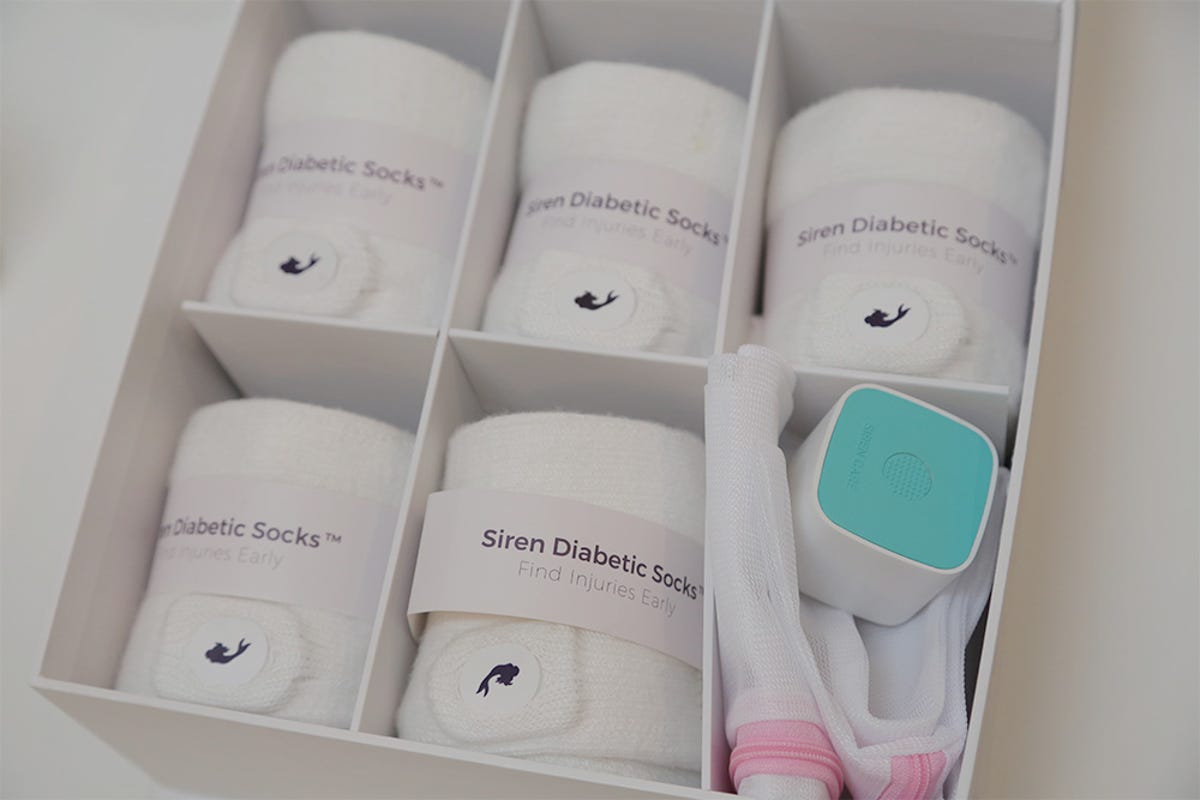Fellow Portrait
Ran Ma
Siren

Updated March 2019
In the United States, over 30 million adults suffer from diabetes and a 11.5 million more are undiagnosed, reports the International Diabetes Foundation, whose forecasts predict these figures will rise 35% by 2045. America’s expenditure on diabetes is estimated at $348 billion, by far the world’s highest per capita figure. A fair percentage of this goes to one of the primary complications of diabetes: diabetic foot ulcers (DFUs).

The consequences of diabetes
Found in one in six patients in developed countries, DFUs often have serious consequences: an estimated 138,000 lower limb amputations take place in the US alone due to these ulcers. Globally the figure is over 1 million people, with a lower limb lost ever 20 seconds. In short, DFUs are responsible for up to 70% of all lower limb amputations.

A proven solution
Ran Ma, a biomedical engineer born in China and raised in Texas, has decided to make this problem her focus. “I first learned about diabetic foot ulcers in the wound lab at Northwestern University,” says Ran. DFUs form as a result of nerve damage and poor blood flow in the lower limbs. With a loss of sensation, patients can be less aware of ulcers and infections. Left untreated, they can lead to complications and amputation. Ran realised that a solution existed. “There was clear clinical evidence that ulcers can be prevented by temperature monitoring, but it wasn’t widely adopted,” she remarks. Sensing that the idea of building a start-up inspired her more than her goal of becoming a doctor, Ran dropped out of her Masters degree and started work on Siren.
I saw there was a large preventable problem with a scientifically proven solution, so I dropped out of school and started working on Siren.
Box of socks
Siren produces Neurofabric™, a special textile embedded with microsensors that constantly measure the temperature of the foot to warn of impending ulcers. When a hotspot is found, the information is sent to the person’s mobile phone. Those without mobiles are contacted on their landline by Siren’s call centre. The socks feel just like other socks, don’t need to be charged and are machine washable, so easily changed. Siren sends out a new box of five pairs every six months.
Building the business
With a lot to prove, Ran knuckled down and faced each step of her path with determination. She hand-sewed and soldered the first prototypes in her bedroom before presenting them at medical conferences. Then she moved to San Francisco, to be at the heart of the tech world. “I didn’t know anyone there, so I worked hard and started building my network.” The next step was funding, through VC networks. From pre-seed to $3.4 million seed funding raised in March 2018, Siren has drawn interest from key investors, including Khosla Ventures, DCM and Founders Fund. To build her team, Ran applied the same resolve. To get co-founder Jie Fu on board, whose valuable experience in hardware manufacturing would be invaluable, Ran dug her heels in: “I called him every day for a year!” Siren’s first clinical trial was completed last year and the first smart socks started shipping to early users soon after. Interest is high: currently there are over 60,000 people on its wait list.
Just like every other founder, for every yes you get, you get dozens of no’s.
The impressiveness of these steps masks the battle Ran had to wage. “When I told people I wanted to put sensors into fabric to save people’s lives they told me it was impossible, otherwise it would already have been done.” Which goes to show the value of Ran’s motto: “Never give up.”
When I told people I wanted to put sensors into fabric to save people’s lives they told me it was impossible, otherwise it would already have been done.


